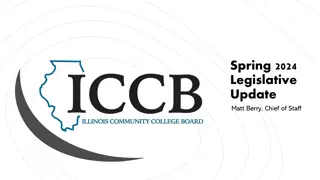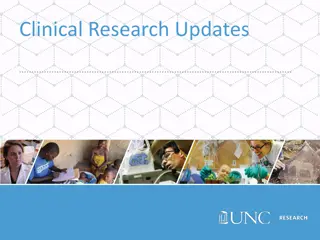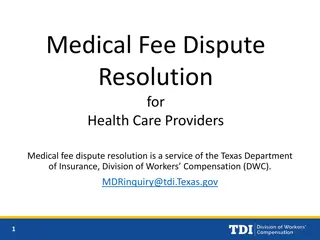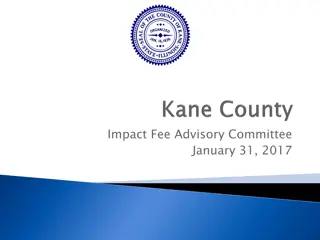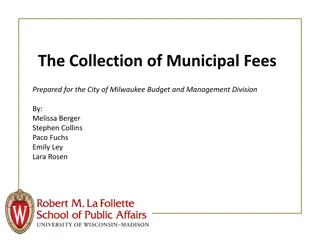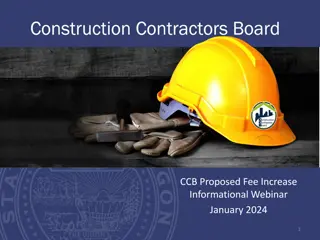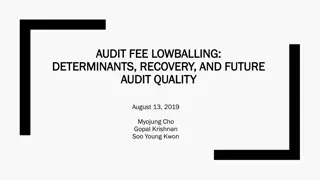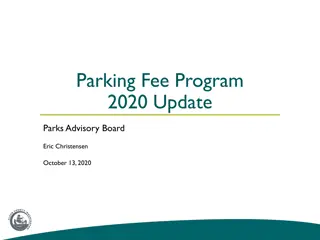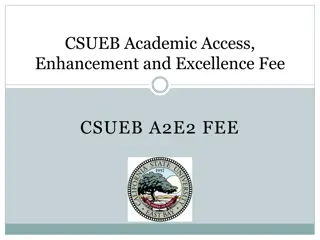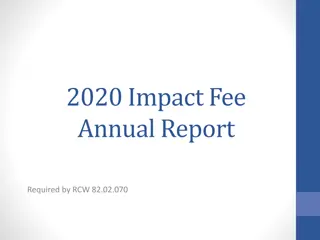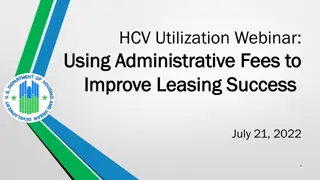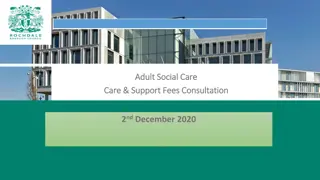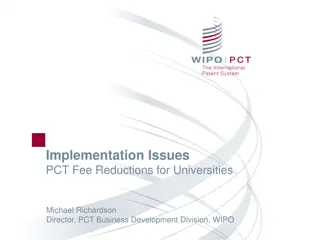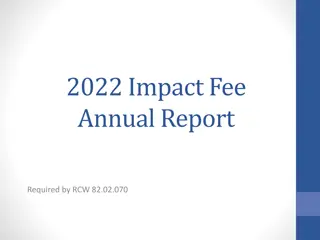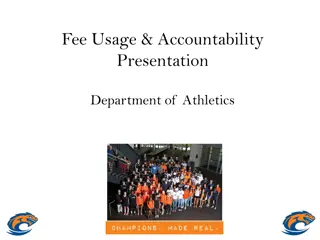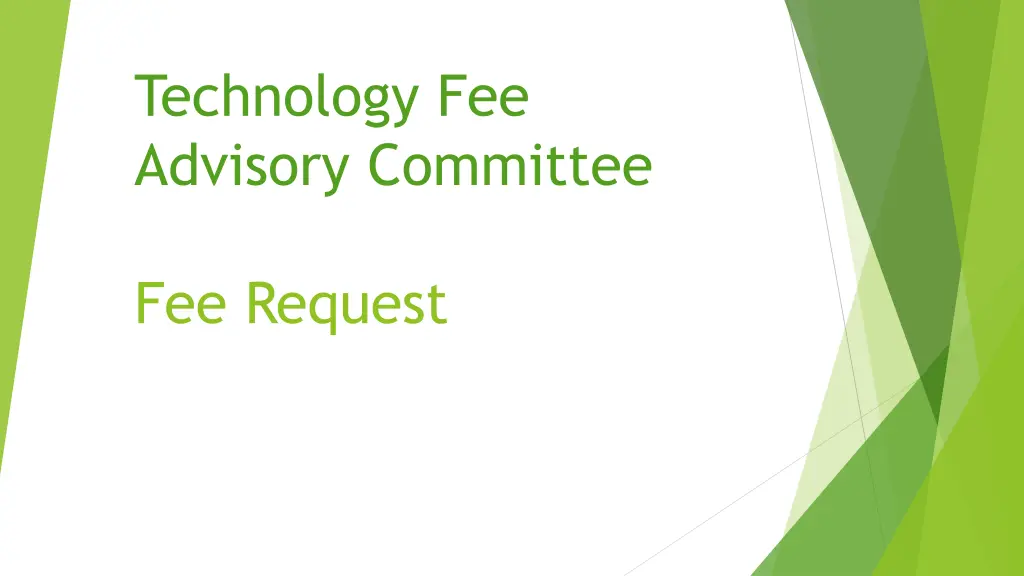
Technology Fee Advisory Committee Insights
Discover the Technology Fee Advisory Committee's initiatives, student services, IT division updates, future impact, and current funding details. Explore how core technologies are enhancing student experiences and supporting campus needs.
Download Presentation

Please find below an Image/Link to download the presentation.
The content on the website is provided AS IS for your information and personal use only. It may not be sold, licensed, or shared on other websites without obtaining consent from the author. If you encounter any issues during the download, it is possible that the publisher has removed the file from their server.
You are allowed to download the files provided on this website for personal or commercial use, subject to the condition that they are used lawfully. All files are the property of their respective owners.
The content on the website is provided AS IS for your information and personal use only. It may not be sold, licensed, or shared on other websites without obtaining consent from the author.
E N D
Presentation Transcript
Technology Fee Advisory Committee Fee Request
How We Serve Students Core technologies for all students, including: Lab computing Instrumented classrooms Active learning spaces
How We Serve Students (Cont.) Core technologies for all students (Cont.): Advanced classroom tools Learning management Residential technologies
How We Serve Students (Cont.) Core technologies for all students (Cont.): Real time help Equipment checkout Training and workshops Student Technology Services
State of the IT Division Have continued to grow Meeting current needs with staff losses Shifting of NDUS costs to NDSU Functional Consolidation
IT Divisions Future Impact on Students Continued growth in network resources Continued growth in support and training services Classroom technology needs continue to grow Expanding possibilities integrating between classroom and outside of class services
Current Technology Fee Funding Fee per credit - $8.44 Fee per semester - $101.28 Fee per year - $202.56 Estimated collections - $2.6m Overall percentage of Student Fee 16%
Current Technology Fee Funding (Cont.) FY17? Tech? Fee? Expenditures Infrastructure? Wireless,? $121,025? ,? 3% Other,?$313,569? ,? 7% Infrastructure? Nonspecific,? $410,959? ,? 9% Staff,?$2,073,383? ,? 47% Equipment,? $534,931? ,? 12% Software,? $486,977? ,? 11% Students,? $420,455? ,? 10% Staff? Operating,? $43,270? ,? 1%
Current Technology Fee Funding (Cont.) Install base: 172 classrooms (155 general purpose) 33 computer labs in 22 buildings (26) 41 student collab and general use locations 1,123 classroom and lab computers 57 GoPrint pay stations and 61 student printers
Technology Fee Increase Request Proposal One Detail to $.91 Credit Request Item A. Glenn Hill Center (STEM) 30 Additional Classrooms Student Salary Increase Total Amount per 12 Credits $7.56 ($.63) $0 ($.00) $3.36 ($.28) $10.92 ($.91)
Technology Fee Increase Request (Cont.) Proposal One Request Calculations Calculation Credit 12-Credit Year Current Request Total $8.44 $101.22 $202.44 $.91 $9.35 $112.14 $224.28 $10.92 $21.84
Technology Fee Increase Request (Cont.) Fee per credit - $9.35 ($.91 increase) Fee per semester - $112.14 ($10.92) Fee per year - $224.28 ($21.72) Estimated collections - $2.8m Percentage increase from last year s fee 11% Overall percentage of Student Fee stays 16%
Reasons for Fee Increase Request No provision for STEM project refresh: 30 general purpose classrooms Advanced classrooms SCALE-UP, wet labs, etc. 48-person computer lab Many general use computers, print station, and huddle room systems
Reasons for Fee Increase Request (Cont.) Full instrumented classrooms: 30,? 19% 30,? 19% 97,? 62% Pre? FY13 Post? FY13 Post? STEM
Reasons for Fee Increase Request (Cont.) Retain IT student workers: IT needs tech-savvy students Lost good student workers Walmart starts at $10 Schedule flexibility matched off-campus
Reasons for Fee Increase Request (Cont.) Funding hasn t kept pace: Expenses are over 50% higher than collections Central University resources bolster until FY2019 Maintenance cost increase by ~5% annually Starting 7/18, funding is in deficit NDUS service agreements dramatically reduced
Reasons for Fee Increase Request (Cont.) Tech? Fee? Revenue? and? Expense 7 Millions 6 5 4 3 2 1 0 2017 2018 2019 2020 2021 2022 Revenue Expense
External Factors A. Glenn Hill Center premised on technology Market realities for entry level worker rates Shifting of NDUS costs to NDSU Functional Consolidation Maintenance cost increase by ~5% annually
Impact of Technology Fee Technology Fee is essential for IT Division: 40% of budget which can support student technologies 100% of student worker funding Has allowed requests such as wireless to permeate more quickly
Impact of Technology Fee Other revenue sources and Tech Fee impact: Appropriated funds diminishing and not intended to replace Technology Fee NDUS service agreements diminished rapidly Local funds cannot be used for anything other than intended purposes
Historical Context of Technology Fee Year Pre-2004 2004 2007 approved staged increase 2012 approved increase 2013 approved increase 2016 increase not approved 2017 request (proposal one) Credit $4.58 $6.88 $8.12 $8.44 $9.61 $9.35 Semester $55 $61 $97 $101 $115 $112 Year $110 $165 $195 $203 $230 $224
Historical Context of Technology Fee Current performance and student response: Continued to adjust to drastic budget changes Increased wireless performance and coverage Classroom technology is now consistently high and expanded Consistent refreshes and staff growth
Historical Context of Technology Fee 2015 rates in North Dakota: $600? $499? $495? $500? $400? $312? $300? $261? $171? $200? $101?$115? $72? $75?$82? $72? $72? $100? $60? $55? $-
Contingency Plan Proposal Two Item A. Glenn Hill Center (STEM) 30 Additional Classrooms Student Salary Increase Total Amount per 12 Credits $7.57 ($.63) $0 ($.00) $0 ($.00) $7.57 ($.63)
Contingency Plan (Cont.) No additional Technology Fee funds: Continue to explore alternative funding sources Prioritize refreshes as funds available Move to break/fix model Lower standard of classroom technology
How We Plan to Improve Streamlined resources More focus on service People extenders New account management system Continued virtualization pilot Piloting emerging technology

